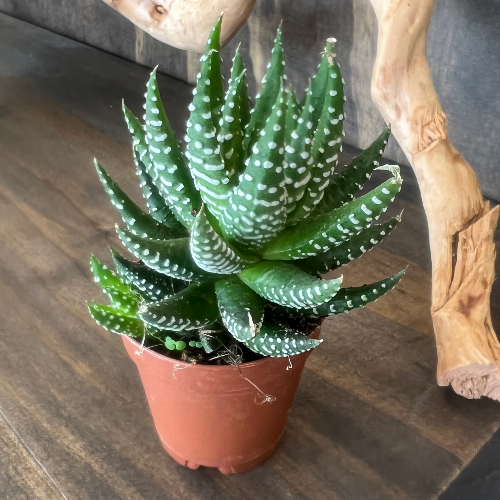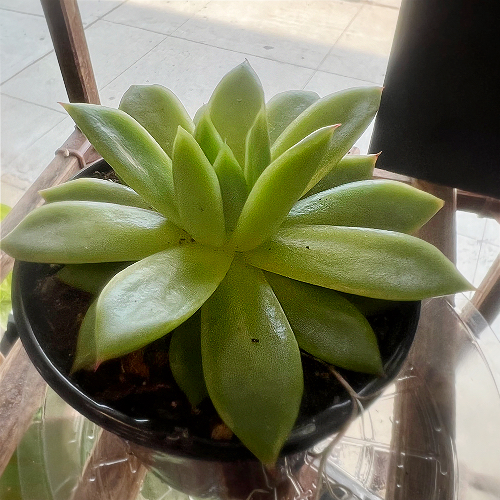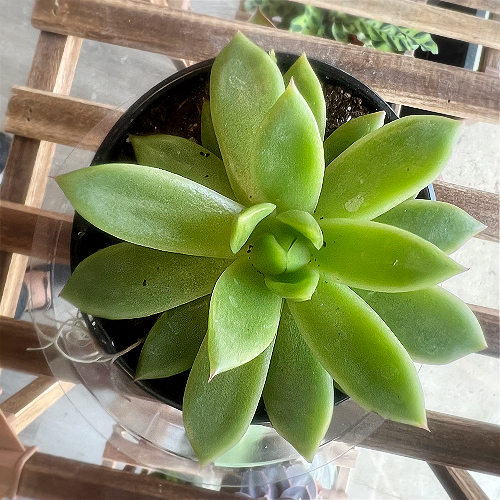Description
Haworthia fasciata, also known as Zebra Plant, is a small and delicate succulent houseplant that grows to a height of only 5 to 8 inches. Its dark green leaves are thick and have white bumps on the outer surface, resembling a zebra pattern.
Zebra plants are low-maintenance when it comes to watering and can survive for weeks without it. They look especially stunning when placed in unique containers or interesting soil mixes, making them a great choice for indoor spaces.
Unlike many other succulents, Zebra plants can thrive in medium and low light conditions typically found indoors. However, if you want to enhance their beautiful red and orange pigments, it’s best to position them where they can receive ample natural light, such as on a south or east-facing windowsill.
When watering your Zebra Plant, give it a generous amount of water until it drains out of the pot’s drainage holes. Discard any excess water collected in the saucer, as these plants dislike sitting in wet conditions for too long. Allow the soil to completely dry out before watering again. You can use a moisture meter or check the soil’s dryness by inserting your finger to the second knuckle. If it feels dry, it’s time to give your Zebra Plant a good drink.
Similar to other succulents, Zebra Plants thrive in a well-draining cactus potting mix. An ideal alternative is a mixture of equal parts pumice or perlite, potting soil, and sand. Since Zebra Plants have long roots, it’s recommended to plant them in a deep pot to provide ample space for airflow around the roots and allow for further growth.
Propagating Zebra plants is straightforward and can be done through offsets or stem cuttings. However, offsets are generally preferred as they are easier to work with compared to stem cuttings.
To propagate using offsets, gently twist and separate a 2-inch tall offset from the mother plant and let it dry out for about 1 to 2 days. Once the offset has dried, plant it in well-drained cactus soil and water it thoroughly.





